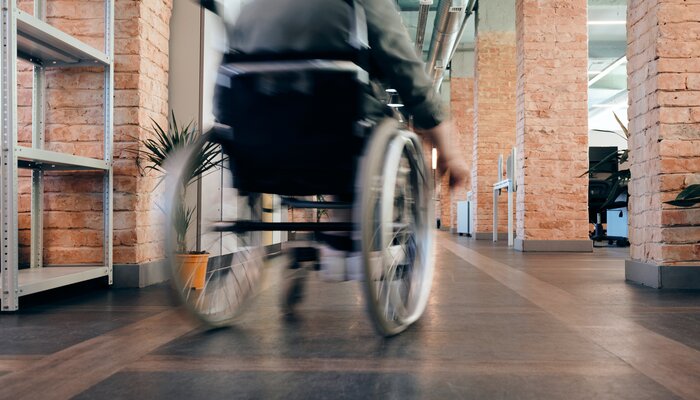Did you know that three million casualties annually are caused by occupational hazards that are often preventable? Understanding and addressing all potential workplace hazards is a strategic imperative for the individual well-being of workers and organizational productivity.
Work-related disabilities and casualties, whether physical or mental, can be prevented and managed using innovative technologies that reduce the risks and improve rehabilitation procedures. Embracing these technologies reflects a commitment to employee well-being, safety, and organizational success in the modern workplace.
From ergonomic innovations to AI-powered safety systems, continue reading this article to learn about cutting-edge technologies that you can employ in your workspace to empower workers and safeguard their well-being.
1. Wearable Devices for Ergonomic Monitoring
Smart posture correctors rely on sensors to detect posture in real-time, enabling users to maintain ideal body alignment. These gadgets offer feedback mechanisms, such as vibrations or visual signals, which promote ergonomic modifications to enhance posture during job tasks.
Smart clothes also have embedded sensors in them that can identify movements and alert you to unhealthy ergonomic habits. They can help prevent repetitive strain injuries. Minor injuries are often not covered under workers compensation law, so, given this lack of cushion, it’s best to exercise caution and proactively protect yourself against them.
Similarly, exoskeletons, also known as exo-suits or powered exoskeletons, are wearable robotic devices designed to enhance the strength and endurance of the user during physically demanding activities. They encourage optimal posture, which improves worker safety and productivity across sectors.
2. Telemedicine Platforms for Remote Healthcare Access
Telemedicine platforms revolutionize healthcare access by facilitating virtual health consultations and remote rehabilitation services. Through virtual consultations, individuals gain remote access to healthcare professionals, enabling early intervention for work-related injuries or illnesses without geographical constraints.
Remote rehabilitation services provide virtual access to physical therapy and supervision, allowing clients to receive treatment from the comfort of their homes or workplaces. Telemedicine improves healthcare accessibility by harnessing technology, particularly for individuals living in distant or underdeveloped regions, encouraging proactive treatment of work-related health conditions and permitting speedier recovery times.
3. Virtual Reality (VR) Training
Virtual reality (VR) training offers immersive experiences to enhance workplace safety and rehabilitation processes. Simulation-based training programs simulate hazardous work environments, allowing employees to practice safety protocols in a controlled setting. This hands-on approach helps in improving their response to emergencies and reducing the risk of accidents.
Additionally, VR-based pain management techniques provide distraction during rehabilitation sessions, minimizing discomfort and enhancing patient compliance with treatment. By immersing individuals in virtual environments, Virtual Reality can reduce the perception of pain and promote faster recovery. Additionally, VR enables personalized rehabilitation exercises tailored to individual needs, optimizing the rehabilitation process.
VR training not only enhances safety awareness and preparedness in the workplace but also improves rehabilitation outcomes by providing effective pain management techniques. Embracing VR technology in training and rehabilitation programs empowers organizations to prioritize employee well-being and safety while promoting efficient recovery from work-related injuries.
4. Biometric Monitoring Devices
Wearable health trackers utilize sensors to monitor vital signs such as heart rate, blood pressure, and stress levels in real-time. This continuous monitoring enables early detection of potential health issues, allowing employees to take proactive measures to address them before they escalate. By providing valuable insights into individual health metrics, wearable trackers empower employees to make informed lifestyle choices and prioritize their well-being.
Additionally, fatigue in workers helps to prevent accidents and injuries caused by impaired performance. By leveraging these technologies, employers can prioritize employee health and safety, reduce the risk of work-related disabilities, and create a more productive and supportive work environment.
Endnote
Technology is instrumental in preventing and managing work-related disabilities, benefiting both employers and employees. Its adoption is crucial for enhancing workplace safety and healthcare management. Employers must prioritize the integration of innovative technologies to create safer working environments, reduce disabilities, and improve outcomes for businesses and employees alike. Embracing these advancements is essential for a healthier and more productive workforce.





